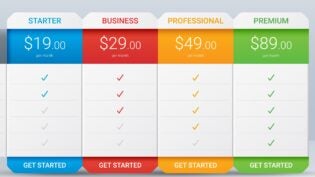
Most organizations I work with have a sales process. But when I look at it, it’s not THEIR sales process.
Sure it’s a sales process, but it’s not theirs. That is, they’ve leveraged the same generic sales stage steps that came with their CRM system. Or they’ve used the generic sales process from the sales training company they last used. Or it’s the process they put in place 10 years ago.
It’s a sales process (or some semblance), but it’s not THEIR sales process.
Often, coincidentally, they aren’t using it. Sales people say, “It doesn’t work.” It’s easy to understand: why would we expect someone else’s process to work for us?
Related Article: A Champion Sales Team is Trained, Not Born
The generic sales processes too many organizations use, perhaps supplied by a sales training vendor, or copied from a book, represent the composite of hundreds of other organizations. They represent a composite of B2C, B2B, B2B2C, transactional, complex, short cycle, long cycle and everything in between. They represent the processes for manufacturing, high tech, consumer products, financial services, healthcare, pharma, professional services, natural resources, transportation, distribution, process, and other industries. They represent the sales processes of giga-global enterprises, large corporations, small and medium size businesses, solopreneurs. They are the sales processes for European, African, Southeast Asian, China, Japanese, Korean, Australian, Eastern European, Middle East, Russia, South-Latin-North America.
These sales processes represent the collective recommendations of hundreds to thousands of organizations the training company or the consultant have worked with. But they don’t represent YOUR Sales Process.
Your sales process is always unique to you and your customers. It is based on data—your past history of success in engaging your customers as they buy. It represents the things your organization does consistently, and in a disciplined manner that causes you to effectively capture the attention of your customers, help them navigate their buying process, create value that is meaningful/impactful to them, distinguish your offerings from competition, and, ultimately win their business.
Analyzing who you win with, how you win, how you differentiate yourself, the most impactful ways you engage customers, and other factors give you your sales process. It’s not one or a few wins. It’s not what one sales person does—even if that person is a high performer. It’s the collective experience of your organization and its history of winning.
Loss analysis doesn’t help a whole lot. It gives you patterns of what you do to lose—clearly you should stop doing this things, but it doesn’t tell you what you do consistently to win.
It takes work to develop YOUR sales process. You need to collect and analyze data, you need to interview your customers. You need to look for the patterns that drive success. It’s not a lot of work, but you still have to understand, specifically, what drives success.
Once you’ve engineered YOUR sales process, then it requires ruthless execution. People who aren’t using it, are “voting” for failure—after all the sales process is based on what drives success. Managers who don’t reinforce it in coaching sessions are managing for low performance, not top performance.
No, YOUR sales process doesn’t last forever, the world, competition, and your customers change. Your business model changes. You need to tune, re-engineer your sales process based on those changes—the shifts in patterns, changes in results.
Our jobs as sales professionals and managers are to maximize performance and the results we produce. Why use someone else’s formula for success?Their business is different. Figure out your own formula for success and execute, execute, execute!
This article was originally published by Partners in Excellence
Published: May 7, 2015
2895 Views
2895 Views












